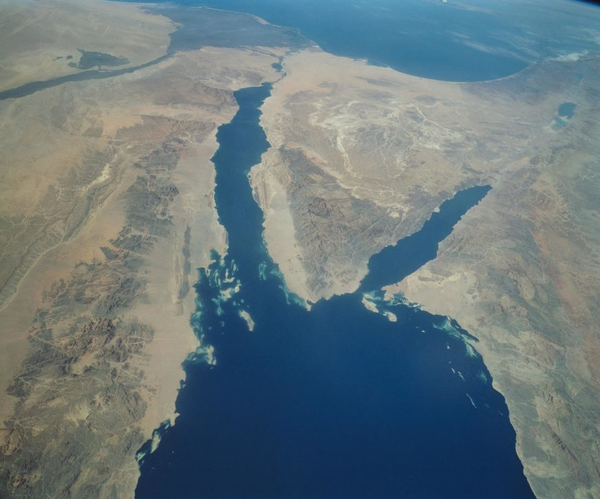
–>
May 19, 2023
In May and early June 1967, the reborn State of Israel, then nineteen years old, was threatened with destruction by a coalition of Arab states. Israel stood alone. It seemed that a disaster akin to the Shoah [Holocaust] of just a generation before was about to revisit our world and my people.
‘); googletag.cmd.push(function () { googletag.display(‘div-gpt-ad-1609268089992-0’); }); document.write(”); googletag.cmd.push(function() { googletag.pubads().addEventListener(‘slotRenderEnded’, function(event) { if (event.slot.getSlotElementId() == “div-hre-Americanthinker—New-3028”) { googletag.display(“div-hre-Americanthinker—New-3028”); } }); }); }
High political drama and military tension pervaded the atmosphere around the Middle East and Israel. There were mobilizations and forward deployments of armies of Egypt, Syria, Jordan, and Iraq facing Israel, amid Arab threats of war and destruction. On May 22, 1967, the Syrian president announced, “We want a full-scale popular war of liberation … to destroy the Zionist enemy.” On May 27, the Egyptian president asserted “Our basic objective will be the destruction of Israel.” When asked in an interview on June second what will happen to Israelis if there is a war, the leader of the Palestine Liberation Organization replied, “Those who survive will remain. I estimate that none of them will survive.”
Not friendly!
For a useful perspective, recall that in spring 1967 no Jews lived in the portions of Judea and Samaria that became known as the West Bank. During the 1948-1949 Arab war on Israel, the Kingdom of Transjordan (invading from across the Jordan River, i.e., the eastern portion of the former Mandate for Palestine, occupied areas of Judea and Samaria, destroyed all Jewish communities in those areas, and renamed itself the Kingdom of Jordan. (The more encompassing word Jordan replacing Transjordan.) Between 1949 and 1967, no Jews were allowed by Jordan to pray at the Western Wall in Jerusalem, a Jewish prayer area since soon after the Roman conquest of Judea and destruction of the Jewish Temple more than nineteen hundred years ago, in the year 70 C.E.
‘); googletag.cmd.push(function () { googletag.display(‘div-gpt-ad-1609270365559-0’); }); document.write(”); googletag.cmd.push(function() { googletag.pubads().addEventListener(‘slotRenderEnded’, function(event) { if (event.slot.getSlotElementId() == “div-hre-Americanthinker—New-3035”) { googletag.display(“div-hre-Americanthinker—New-3035”); } }); }); }
During the 1967 pre-war crisis, Egypt blocked sea lanes to and from Israel’s southern port of Eilat, in effect closing off the Indian Ocean’s international waters from direct access by the Jewish state. In addition to the existing political alliance between Egypt and Syria, a threatening new military alliance was established between Egypt and Jordan. The latter’s military forces (east and west of the Jordan River) come under Egyptian command. Jordan also permitted Iraqi military units to move through its territory, some soon crossing the Jordan River soon to engage Israeli forces in combat.
At Egypt’s demand on May 16, 1967, the United Nations began withdrawing its “peacekeeping” units from the Sinai, opening the area to remilitarization by Egypt. Egypt had nationalized the Suez Canal in the mid-1950s, outraging the British and French. During the short 1956 war over the Suez Canal and Sinai Peninsula, involving Egypt versus France, Israel and the United Kingdom, Israel conquered most of Sinai (just earlier it had been the base for terror attacks on Israel largely via the region of Gaza), while the Europeans captured the canal region. Israeli, British, and French forces withdrew from those areas the following year, with United Nations military units being deployed in the largely desolate Sinai between Egypt’s center of gravity (Cairo, the lower Nile River area and its Delta region) and Israel, to serve as monitors and peacekeepers.
Not a simple history!
By mid-late May 1967, major Egyptian armored forces were deploying forward into eastern near the demarcation with Israel. Non-adjacent Arab states began threatening Israel.
The two superpowers were not helpful. The USSR had equipped/armed Syria and Egypt, and in the spring of 1967 encouraged them to attack Israel. The USA, heavily engaged in Vietnam, restrained Israel and ignored its 1957 pledge (during Eisenhower’s presidency) regarding a demilitarized Sinai.
In the years leading to 1967, Israel obtained most of its weapons from France, a portion from the United Kingdom, some even from West Germany. Israel also established an industry to upgrade select obsolete military equipment purchased from abroad. Just before the June war, France embargoed all weapon deliveries and sales to the Middle East, a step mostly affecting Israel, since France was its primary supplier. The USA only took that role later.
‘); googletag.cmd.push(function () { googletag.display(‘div-gpt-ad-1609268078422-0’); }); document.write(”); googletag.cmd.push(function() { googletag.pubads().addEventListener(‘slotRenderEnded’, function(event) { if (event.slot.getSlotElementId() == “div-hre-Americanthinker—New-3027”) { googletag.display(“div-hre-Americanthinker—New-3027”); } }); }); } if (publir_show_ads) { document.write(“
During the crisis and buildup to war in 1967, Israel’s army deployed and stood on high alert. With virtually all reserve soldiers mobilized, the economy ground to a halt. Jewish organizations around the world began to mobilize support for Israel and call for volunteers to help that civilian society and economy with replacement workers, skilled and unskilled. With the eruption of war, the volunteer movement gained momentum in several countries.
I was an American Jew living and studying in London that year, not reading Jewish newspapers and thus did not notice calls to assist Israel — I only learned about those notices years later when reading about the ’67 war. But during the weeks of political-military emergency before the actual outbreak of war, I had begun thinking on my own of going to Israel to help.
T he morning of June 5, upon hearing the news of the war’s opening, my decision was immediate. A graduate student in the United Kingdom following several years of active service in the U.S. Army (Ordnance Corps), I had significant military field experience as a platoon leader and company commander when serving in the Republic of Korea. Discharged from active duty in 1966 and soon studying in the United Kingdom, I asked myself “Can I stand by and do nothing? I must help in some way.” I looked up the address for the Israel Embassy, took a taxi there about nine that morning, and was directed to an office and interviewed.
he morning of June 5, upon hearing the news of the war’s opening, my decision was immediate. A graduate student in the United Kingdom following several years of active service in the U.S. Army (Ordnance Corps), I had significant military field experience as a platoon leader and company commander when serving in the Republic of Korea. Discharged from active duty in 1966 and soon studying in the United Kingdom, I asked myself “Can I stand by and do nothing? I must help in some way.” I looked up the address for the Israel Embassy, took a taxi there about nine that morning, and was directed to an office and interviewed.
I had never been to Israel, grew up in America, had a Reform Jewish bar mitzvah, and was delighted and proud to be an American. My mother was born in the USA, while her parents came from Eastern Europe when teenagers; my dad came to the States as a child. Several of my uncles, cousins, and my elder brother and I had served in the U.S. military. I was quite aware of some of the challenges and tragedies in Jewish history, especially the recent Holocaust in Europe. My decision regarding Israel in June 1967 seemed natural but was not inevitable. The act of going to Israel and assisting on the spot in various ways opened a new world and sense of self for me, as I think it probably did for all the volunteers.
I landed in Israel after the war; made my way to Jerusalem and found an offbeat hotel.
Another visitor at my small hotel told me about an office that placed foreign volunteers in jobs in Israel. The next afternoon I found the nondescript Jewish Agency office. A middle-aged man with a British accent interviewed me. When I mentioned my experience as an ordnance officer in the American army, he brightened and asked if my experience involved field or staff duties. I had served a year in Korea with the Seventh Infantry Division, in a forward support company as a platoon leader and company commander. I was a first lieutenant and later promoted to captain. That brief summary of my experience was a right answer. He called two men from the next room and they spoke animatedly in Hebrew, of which I understood not a word. Together they continued the interview, questioning me about military equipment. It was clear that they were checking my familiarity with military vocabulary to test my veracity.
Twenty minutes later they spoke among themselves again and then the fellow with the British accent stood up and said quite formally, “We invite you to lead a group of civilian volunteers to work in Sinai to clear out damaged and abandoned military equipment. Are you interested?”
I stood up also. Interested? Of course, I was interested! Suddenly I felt as if I was levitating six feet in the air. “Yes, certainly!”
“Most Israeli ordnance workers are reservists. We need to demobilize as many as possible so the economy can begin functioning again,” explained my interviewer. “Your group will help facilitate that. When can you leave?”
I was traveling with a backpack. It was at the hotel nearby. “Virtually immediately,” I said.
We would wear plain fatigues without insignia. We should avoid journalists. The pay was zero. Rations would be mediocre and we would be billeted, well, it was not yet clear how, but I should expect the facilities to be raw.
My heart rose.
My Sinai volunteer group had a hand in evacuating some two hundred and fifty armored and transport vehicles, many artillery pieces, and a wide variety of other military equipment. Later, upon viewing films and photos of the Egyptian/Russian equipment put into Israeli military service, and reading of such equipment being sent to the USA for analysis, I would feel a sense of ownership.
In 1967, we slept without dreams on the beaches, and when awake viewed the mountains pink and tan eastward across the sea in Jordan and Arabia — hazy and mysterious, but not beckoning. Most of the volunteers, although not all, were in our ancestral home, profoundly happy to be there, aware that volunteering meant something undefined as yet, but lifechanging. Our forefathers came from this land, two millennia ago. Our ancient homeland, people and culture beckoned at a time of need, and we had returned.
Image: Picryl
<!–
–>
<!– if(page_width_onload <= 479) { document.write("
“); googletag.cmd.push(function() { googletag.display(‘div-gpt-ad-1345489840937-4’); }); } –> If you experience technical problems, please write to [email protected]
FOLLOW US ON
<!–
–>
<!– _qoptions={ qacct:”p-9bKF-NgTuSFM6″ }; ![]() –> <!—-> <!– var addthis_share = { email_template: “new_template” } –>
–> <!—-> <!– var addthis_share = { email_template: “new_template” } –>





